

In the vast Cornus family, Japanese dogwood is an outlier thanks to its one-of-a-kind fruits and flowers.
Key Japanese dogwood facts
Botanical name – Cornus kousa
Family – Cornaceae
Type – tree
Height – up to 30 feet (10 m)
Exposure – sun to part sun
Soil – any type, well drained
Hardiness – hardy
Foliage – deciduous
Flowering – summer – Fruit formation – end of summer, beginning of fall
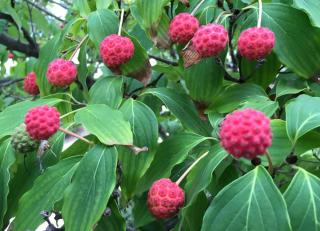 Cornus kousa is a dogwood variety that’s native to Korea and Japan. It grows with an wide, overarching bearing and its size depends on how its growing environment supports it. Indeed, though it typically peaks at 6 to 10 feet tall (2 to 3 m), in good conditions it towers to nearly 30 feet (10 meters).
Cornus kousa is a dogwood variety that’s native to Korea and Japan. It grows with an wide, overarching bearing and its size depends on how its growing environment supports it. Indeed, though it typically peaks at 6 to 10 feet tall (2 to 3 m), in good conditions it towers to nearly 30 feet (10 meters).
Japanese dogwood leaves are oval with a pointed tip. Each one is about 4 inches long for 2 wide (10 x 5 cm). Topside is dark green, and silvery green underneath. In fall, this leafage turns red and violet.
End of May and beginning of June is when to expect flowers. The flowers are tiny, almost invisible. However, they’re surrounded in amazing large white bracts that look almost like petals. 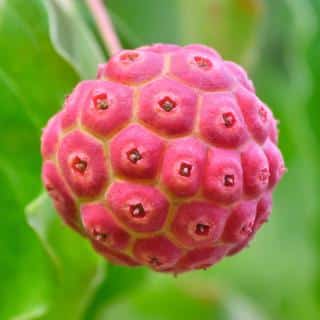 When summers are hot, edible fruits appear at the end of the season. They look like strawberries, which is why Cornus kousa goes by “Japanese strawberry tree” in the British Isles. They’re better as ornaments than as regards taste, though… (not to be confused with the other strawberry tree).
When summers are hot, edible fruits appear at the end of the season. They look like strawberries, which is why Cornus kousa goes by “Japanese strawberry tree” in the British Isles. They’re better as ornaments than as regards taste, though… (not to be confused with the other strawberry tree).
The tree has many other botanical names as well, such as Cornus japonica, Benthamidia japonica, Benthamidia kousa and Dendrobenthamia japonica
This will for sure add a touch of exotic originality to your garden.
A Japanese dogwood will feel right at home in soil whatever the pH may be, as long as it drains well. It loves both full sun and part shade. However, even though it’s quite hardy, it doesn’t like windy spots.
Fall is the best season to plant Japanese dogwood. If the weather isn’t too dry, you can proceed as early as the end of September. Planting your tree in spring is also possible. However, it will be much more fragile in the roots, needing more water.
The small size of Cornus kousa mean that it’ll grow well either in the ground or in a pot. In garden stores, there’s a chance you’ll find bare-root specimens. In this case, applying root dip will greatly help the tree to settle in.
Growing outdoors:
When you’ve chosen the spot, dig a planting trench about 8 to 12 inches deep and wide (20 to 30 cm). You can amend the soil with sand or wood ash for drainage, perhaps even soil mix to stimulate growth for the first few months.
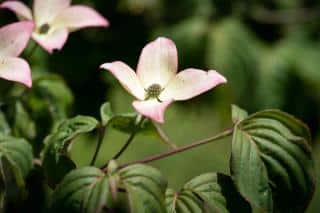 In cases where your Japanese dogwood is sold in a container, remove the pot and break the clump up to free roots. They’ll have an easier time growing back.
In cases where your Japanese dogwood is sold in a container, remove the pot and break the clump up to free roots. They’ll have an easier time growing back.
Backfill the hole, pressing the soil down well with your feet. At the surface, prepare a bowl-shaped ridge all around to direct water towards the trunk. The finishing touch is to spread a thick layer of plant mulch that will lock much-needed moisture underground in summer.
Potted Japanese dogwood:
The technique for planting in pots is nearly identical to when you’re planting in the ground. The most important factor is the container itself: it must be large enough and must include holes for excess water to drain away.
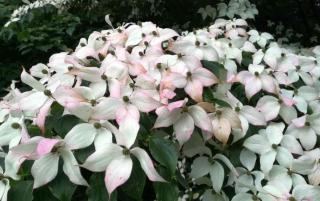 Before planting, spread a drainage layer an inch or so thick (a few centimeters) along the bottom, without clogging the holes. Possible drainage materials include clay pebbles, gravel, and broken pot shards.
Before planting, spread a drainage layer an inch or so thick (a few centimeters) along the bottom, without clogging the holes. Possible drainage materials include clay pebbles, gravel, and broken pot shards.
As regards substrate, use soil mix to which you can add extra plant-based soil mix and vermiculite (or perlite). This last ingredient has two main benefits: not only does it enhance drainage, it also retains some of the moisture to release it later on.
Repotting your tree is required every 4 to 5 years, scaling the container up and replacing as much of the soil as you can. Lastly, if ever your tree is growing too large, you might have to transfer it to the garden instead of keeping it in a pot.
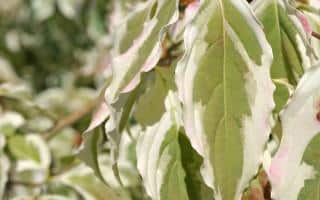 Normally, Japanese dogwood doesn’t need any pruning. However, if you want to keep it a manageable size, or balance its proportions to something more harmonious, it’s possible to prune it in a way similar to coppicing. This helps form a structure where several stems continuously emerge directly from the tree’s stump.
Normally, Japanese dogwood doesn’t need any pruning. However, if you want to keep it a manageable size, or balance its proportions to something more harmonious, it’s possible to prune it in a way similar to coppicing. This helps form a structure where several stems continuously emerge directly from the tree’s stump.
Choose which branches to remove according to the shape you plan to give it. This pruning should take place at the end of fall or at the start of winter, when leaves have fallen.
To get new Japanese dogwood trees from an existing one, you’ve got 2 techniques:
Although Cornus kousa doesn’t seem to attract many pests and parasites, it does fall victim to a disease that is specific to the species: dogwood anthracnose.
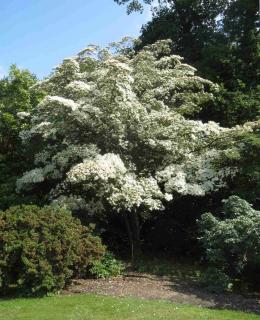 As is often the case with Cornus, Japanese dogwood is very versatile. You can use it in many fashions:
As is often the case with Cornus, Japanese dogwood is very versatile. You can use it in many fashions: